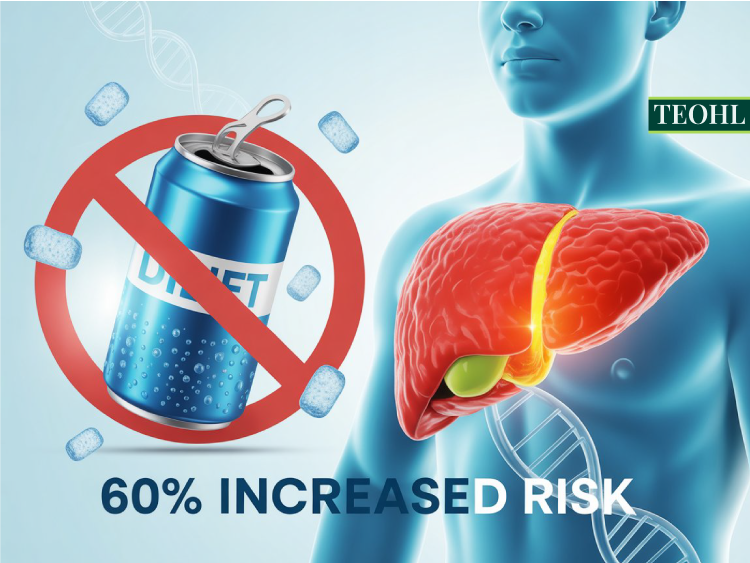The Beginner’s Guide to Intuitive Eating: Your Path to Food Freedom

Picture this: You wake up and actually look forward to breakfast. Not because you’re following a meal plan or counting points, but because you’re genuinely hungry and excited about nourishing your body. This is what intuitive eating for beginners can offer—a revolutionary approach to food freedom that replaces diet culture with body wisdom. You eat lunch without guilt, enjoy dinner with friends without calculating calories, and go to bed feeling satisfied—not stuffed or deprived. This isn’t a fantasy. This is what life can look like when you embrace intuitive eating for beginners and learn to trust your body again.
💡 Key Takeaways
- Intuitive eating for beginners is the anti-diet that helps you rebuild trust with your body’s natural hunger and fullness cues
- It’s based on 10 evidence-based principles developed by registered dietitians in 1995
- Weight loss isn’t the goal—improved mental health, body image, and food freedom are
- Anyone can learn intuitive eating for beginners, regardless of their dieting history or health conditions
- It takes time and practice—there’s no “perfect” way to be an intuitive eater
What Actually Is Intuitive Eating for Beginners?
Let’s be honest—if you’ve spent years following diet rules, the concept of intuitive eating for beginners probably sounds terrifying. I get it. After working with thousands of people trying to heal their relationship with food, I’ve seen this fear countless times.
Intuitive eating for beginners isn’t simply eating whatever you want whenever you want (though that misconception is everywhere). It’s a framework that teaches you to become the expert of your own body by reconnecting with the hunger and fullness signals you were born with—yes, the same ones that got disrupted by years of dieting, food rules, and external “experts” telling you what, when, and how much to eat.
If you’ve struggled with emotional eating or diet culture myths, you’re not alone. Created by registered dietitians Evelyn Tribole and Elyse Resch in 1995, intuitive eating is now backed by over 125 research studies. But here’s what makes it different: it’s not another diet disguised as wellness. There are no forbidden foods, no meal plans, no “good” or “bad” choices. Instead, it’s about learning to trust your body again.
A personal observation: In my 15 years of nutrition work, I’ve noticed something fascinating. The clients who struggled most with intuitive eating for beginners weren’t the ones who “lacked willpower.” They were the ones who had followed diets so perfectly for so long that they’d completely lost touch with their body’s natural wisdom. Research supports this observation, showing that chronic dieting can disrupt our natural hunger and satiety cues. The good news? That wisdom is still there, waiting to be rediscovered.
Why Your Body Actually Knows Best
Think about a baby for a moment. When they’re hungry, they cry. When they’re full, they turn away from the bottle or push food away. They don’t count calories or worry about portion sizes. They eat when they need energy and stop when they’ve had enough. This isn’t because babies are smarter than us—it’s because their natural cues haven’t been disrupted yet.
We’re all born intuitive eaters, but somewhere along the way, we learn to override our body’s signals. Maybe your parents insisted you clean your plate. Perhaps you started your first diet as a teenager. Or maybe you learned that certain foods were “good” or “bad.” All of these experiences, while often well-intentioned, can disconnect us from our innate eating wisdom.
The beautiful thing about intuitive eating for beginners is that it’s not about learning something new—it’s about unlearning the rules that have gotten in the way of what your body already knows.

The 10 Principles That Change Everything
Now, you might be wondering, “If there are no rules, how do I actually do this?” That’s where the 10 principles come in. Think of them as guideposts rather than rigid rules—they’re designed to help you gradually rediscover your body’s natural eating patterns. For more detailed guidance on implementing these principles, check out our mindful eating techniques and body acceptance strategies.
Principle 1: Reject the Diet Mentality
This means throwing out diet books, deleting calorie-counting apps, and saying goodbye to the fantasy that the “perfect diet” exists. It’s about recognizing that diets fail 95% of the time—not because you lack willpower, but because restriction inevitably leads to rebellion.
Principle 2: Honor Your Hunger
Your hunger is not your enemy—it’s your body’s way of asking for fuel. When you consistently ignore hunger signals, you’re more likely to overeat later. Learning to recognize and respond to early hunger cues helps prevent that desperate, “I’ll eat anything” feeling.
Principle 3: Make Peace with Food
Give yourself unconditional permission to eat all foods. Yes, even the ones you’ve labeled as “bad.” This isn’t about throwing nutrition out the window—it’s about removing the emotional charge around certain foods so you can make choices from a place of self-care rather than fear.
Principle 4: Challenge the Food Police
That voice in your head saying you’re “good” for eating salad or “bad” for having dessert? That’s the food police. Learning to challenge these thoughts is crucial for developing a peaceful relationship with food.
Principle 5: Discover the Satisfaction Factor
When you eat what you really want, in an environment that’s pleasant and conducive to eating, you’ll find that it takes much less food to feel satisfied. Satisfaction is the game-changer that many people overlook.
Principle 6: Feel Your Fullness
Just as your body signals hunger, it also signals fullness. Learning to pause mid-meal and check in with your body helps you recognize when you’ve had enough. This isn’t about stopping at the “perfect” fullness level—it’s about awareness.
Principle 7: Cope with Your Emotions Without Using Food
Food can be comforting, and that’s okay sometimes. But when it becomes your primary coping mechanism, it’s time to develop other tools. This principle is about expanding your emotional toolkit.
Principle 8: Respect Your Body
It’s hard to take good care of something you hate. Body respect doesn’t mean you have to love everything about your body, but it means treating it with basic kindness and care.
Principle 9: Movement—Feel the Difference
Shift your focus from burning calories to how movement makes you feel. When you find ways to move that you actually enjoy, exercise becomes self-care rather than punishment.
Principle 10: Honor Your Health with Gentle Nutrition
This principle comes last for a reason. Once you’ve made peace with food, you can focus on nutrition from a place of self-care rather than restriction. It’s about progress, not perfection.
Let’s Bust Some Myths (Because There Are So Many)
Intuitive eating for beginners has exploded in popularity, which is wonderful—but it’s also led to some serious misconceptions. Let me set the record straight on the biggest ones:
❌ Myth: “I’ll eat nothing but junk food”
✅ The Truth:
Yes, you might eat more previously “forbidden” foods at first—this is called the honeymoon phase. But here’s what happens next: when you truly know you can have ice cream anytime, it loses its power over you. Your body naturally craves variety, and when the restriction is gone, so is the obsession.
❌ Myth: “Intuitive eating is just the hunger-fullness diet”
✅ The Truth:
This drives me crazy because it completely misses the point. Intuitive eating for beginners is about so much more than hunger and fullness. It’s about healing your relationship with food, challenging diet culture, and learning to trust your body. The 10 principles framework shows that hunger and fullness are just 2 of 10 components. Sometimes you’ll eat when you’re not hungry (hello, birthday cake!), and that’s perfectly fine.
❌ Myth: “It’s a weight loss method”
✅ The Truth:
Nope. Weight loss is not the goal of intuitive eating for beginners. Your weight might go up, down, or stay the same—and all of these outcomes are normal. The focus is on behaviors and your relationship with food, not the number on the scale.
❌ Myth: “People with health conditions can’t do it”
✅ The Truth:
This is where the “gentle nutrition” principle shines. You can absolutely practice intuitive eating for beginners while managing diabetes, food allergies, or other health conditions. Research shows that intuitive eating can be successfully adapted for various medical conditions. It might require working with a registered dietitian who understands both intuitive eating and medical nutrition therapy, but it’s definitely possible.
Your First Steps on This Journey
I know this all sounds great in theory, but you’re probably wondering, “Okay, but how do I actually start intuitive eating for beginners?” Here’s the thing—there’s no perfect way to begin, and you don’t have to master all 10 principles before you see benefits. These steps work well alongside our intuitive eating meal planning guide and hunger awareness exercises.
Week 1: Notice Without Changing
Before you change anything, spend a week simply observing. When do you eat? How hungry are you? What thoughts come up around food? Are you eating because you’re hungry, bored, stressed, or because it’s “time to eat”? This isn’t about judgment—it’s about awareness.
Week 2: Experiment with Hunger
Start tuning into your hunger signals. What does hunger feel like in your body? Is it a growling stomach, low energy, difficulty concentrating? Try using a hunger scale from 1 (starving) to 10 (uncomfortably full) and aim to eat around a 3 or 4.
Week 3: Add One “Forbidden” Food Back
Choose one food you’ve been restricting and give yourself full permission to eat it. Keep it in the house. Notice what happens. Do you binge on it? Do you think about it constantly? Do you gradually lose interest? There’s no right or wrong response—just information.
Week 4: Focus on Satisfaction
Ask yourself: “What do I really want to eat right now?” Then, create an environment where you can truly enjoy it. Sit down, minimize distractions, and pay attention to how the food tastes, smells, and feels. Notice how much more satisfying food becomes when you’re fully present.
“The goal isn’t to become the ‘perfect’ intuitive eater. It’s to develop a trusting, respectful relationship with your body and food. Some days will feel easier than others, and that’s completely normal.”
What Success Actually Looks Like
Here’s what I want you to know: success with intuitive eating for beginners doesn’t look like what diet culture has taught you to expect. You won’t necessarily lose weight, fit into smaller clothes, or eat “perfectly.” Instead, success might look like:
- Going to a restaurant and ordering what sounds good, not what has the fewest calories
- Eating a piece of cake without guilt or the need to “make up for it” later
- Feeling comfortable in your body, regardless of its size
- Having energy for the things that matter to you
- Not thinking about food constantly
- Trusting your body to guide your eating choices
- Finding movement you actually enjoy
- Sleeping better because you’re not obsessing about tomorrow’s diet
These changes might seem small, but they’re revolutionary when you’ve spent years at war with your body.
When You Need Extra Support
I want to be honest with you: intuitive eating for beginners isn’t always easy, especially if you have a history of disordered eating, medical conditions that affect eating, or trauma around food and body image. If you find yourself struggling, please know that seeking support isn’t a sign of failure—it’s a sign of wisdom.
Learn more about eating disorder recovery and finding the right registered dietitian for intuitive eating. Consider working with a certified intuitive eating counselor or a registered dietitian who specializes in this approach if you:
- Have a history of eating disorders
- Find yourself bingeing frequently
- Feel overwhelmed by the process
- Have medical conditions that require specific nutrition guidance
- Notice that your mental health is suffering
The Long Game: Why This Approach Sticks
You might be wondering why intuitive eating for beginners succeeds where diets fail. The research gives us some clues: people who practice intuitive eating show better psychological health, including improved self-esteem, body satisfaction, and lower rates of depression and anxiety. They’re also more likely to maintain stable eating patterns long-term.
But beyond the research, there’s something beautifully simple about intuitive eating for beginners: it works with your body instead of against it. When you’re not constantly fighting your natural impulses, you have more energy for the things that actually matter in your life.
What I’ve learned: The clients who thrive with intuitive eating for beginners aren’t the ones who “get it right” immediately. They’re the ones who approach it with curiosity instead of perfectionism, who view “mistakes” as learning opportunities, and who remember that this is a practice, not a destination.
Your Permission Slip
If you’re reading this and feeling a mix of excitement and terror, congratulations—you’re normal. Letting go of diet culture and trusting your body can feel scary when you’ve been taught that your body can’t be trusted.
But here’s your permission slip: You’re allowed to eat when you’re hungry. You’re allowed to enjoy food. You’re allowed to take up space in your body, exactly as it is right now. You’re allowed to heal your relationship with food, even if it takes time.
You don’t need to earn your food through exercise, good behavior, or clean eating. Food is not a reward or punishment—it’s nourishment, pleasure, culture, and connection all rolled into one.
Ready to Start Your Intuitive Eating for Beginners Journey?
Remember, becoming an intuitive eater is a process, not a destination. Be patient with yourself, stay curious, and trust that your body has the wisdom you need—you just need to learn how to listen again.
Your next step: Choose just one principle that resonates with you and focus on that for the next week. Small steps lead to lasting change.
Want to learn more? Check out the official Intuitive Eating website for additional resources and to find certified counselors in your area.
About Clara Vittoriani, MS, RDN
Clara Vittoriani is a Registered Dietitian Nutritionist with a Master’s degree in Nutrition Science from Tufts University’s Friedman School of Nutrition Science and Policy. With over 15 years of experience in both clinical and editorial roles, Clara specializes in evidence-based nutrition communications and helping people develop healthier relationships with food. She’s particularly passionate about making nutrition accessible and culturally inclusive.
When she’s not crafting evidence-based content or testing recipes, you’ll find Clara exploring local farmers’ markets, hiking in national parks, or experimenting with plant-based dishes in her home kitchen. She believes that good nutrition should enhance your life, not control it.





